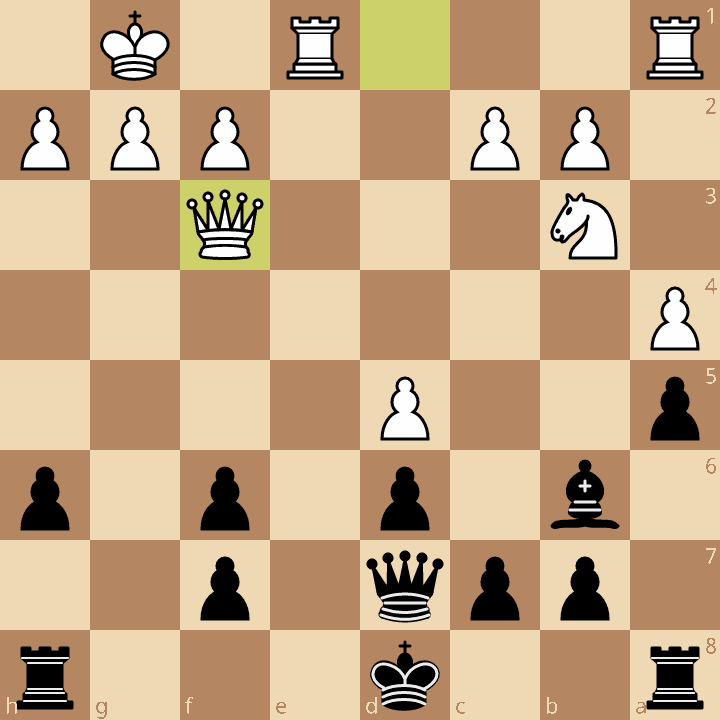Classical Game Recap: Meeting the Belgrade Gambit
What handwaving gets you when you're on the receiving end of a gambit.
Game 2 of the mini-match between me and Joe. This time he’s got the White pieces. I will note that I was not in the most competitive of moods and that a flippant approach to the opening landed me in deep trouble from the beginning. So let this be a cautionary tale of how not to approach an unfamiliar position!
Time Control: 60 minutes with 15 second increment per move
White: Joe Birt (1800 USCF)
Black: Me (1690 USCF)
1.Nc3 e5 2.e4 Nf6 3.Nf3 Nc6 4.d4 exd4 5.Nd5
Like the last game, Joe springs a surprise. This time, it’s the Belgrade Gambit. I start out fine but go wrong pretty quickly. I was amused at the sight of this for some misplaced nostalgia of an era where this was commonly played at the master level. However, I severely underestimated the kind of initiative that White gets when Black tries to develop normally. It’s worth mentioning I have never won a game against this gambit online either.
5…Bc5 6.Bg5 d6?
White now has a big advantage in the opening. The counter-intuitive 6…Be7 is much stronger. At first it seems strange to make this move, but it has a point: Black is threatening to play Nxd5, winning material. Now that I don’t have Be7 available, the position quickly becomes untenable.
7.Bb5! Bd7 8.O-O h6?!
I don’t know why I provoked the exchange on f6. But I felt I couldn’t castle either. 8…O-O would lead to 9.Nxf6 gxf6 with a wrecked structure and the bishop would constantly be surveilling the f6 square for any sign of weakness. However, compared to the game continuation, this may have been preferable anyways.
9.Bxf6 gxf6 10.Bxc6?!
This gives up a bit of advantage for White, who might consider playing 10.c3! or 10.b4! instead, keeping the pressure and opening up more lines for the majors on the back rank.
10…Bxc6??
10…bxc6 was better. My structure would be wrecked but it also comes with an important tempo against the knight on d5. For instance 11.Nf4 Rg8!? and play continues. Long-term, White is still better, but not nearly as good as in the game.
11.Nxd4 Bxd5 12.exd5 Qd7
Preparing to castle. As it turns out, trying to move the king to the queenside gets me in a lot of trouble.
13.Re1+!
There goes that plan.
13…Kd8??
The entire game I’ve been playing a bit… laissez-faire, and this move lands me in the ultimate trouble. 13…Kf8! was the only way to continue putting up a fight. Black can follow up with Rg8 and try to use the open file.
14.Nb3! Bb6 15.a4! a5 16.Qf3!
16…c6??
My idea here was to give the king space on c7 so as to allow the rook on a8 a role in defending the otherwise-hanging one on h8.
17.Qxf6+!
A cold shower. 17…Kc7 18.Re7 wins the queen.
1-0
The main takeaway:
I am still definitely subject to handwaving, which happened here with the move 6…d6. Instead of looking at the possibilities in the position that were afforded to White by the gambit, I played a normal-looking move that was clearly wrong. I should have spent the extra time looking at options that didn’t leave me subject to that uncomfortable pin. Another example was the move 10…Bxc6. I chose the move that kept my pawn structure orderly, but allowed my opponent to continue his plan with no interruptions.
The conclusion of this match dropped my ELO back to 1667, but I still feel like the games I lost gave me some insights into becoming a stronger player in the future. Next up: The Sacramento Weekend Swiss. Four games of 90+30 which hopefully provide me with more practical feedback on my game.






Great stuff, Nick! Thanks!